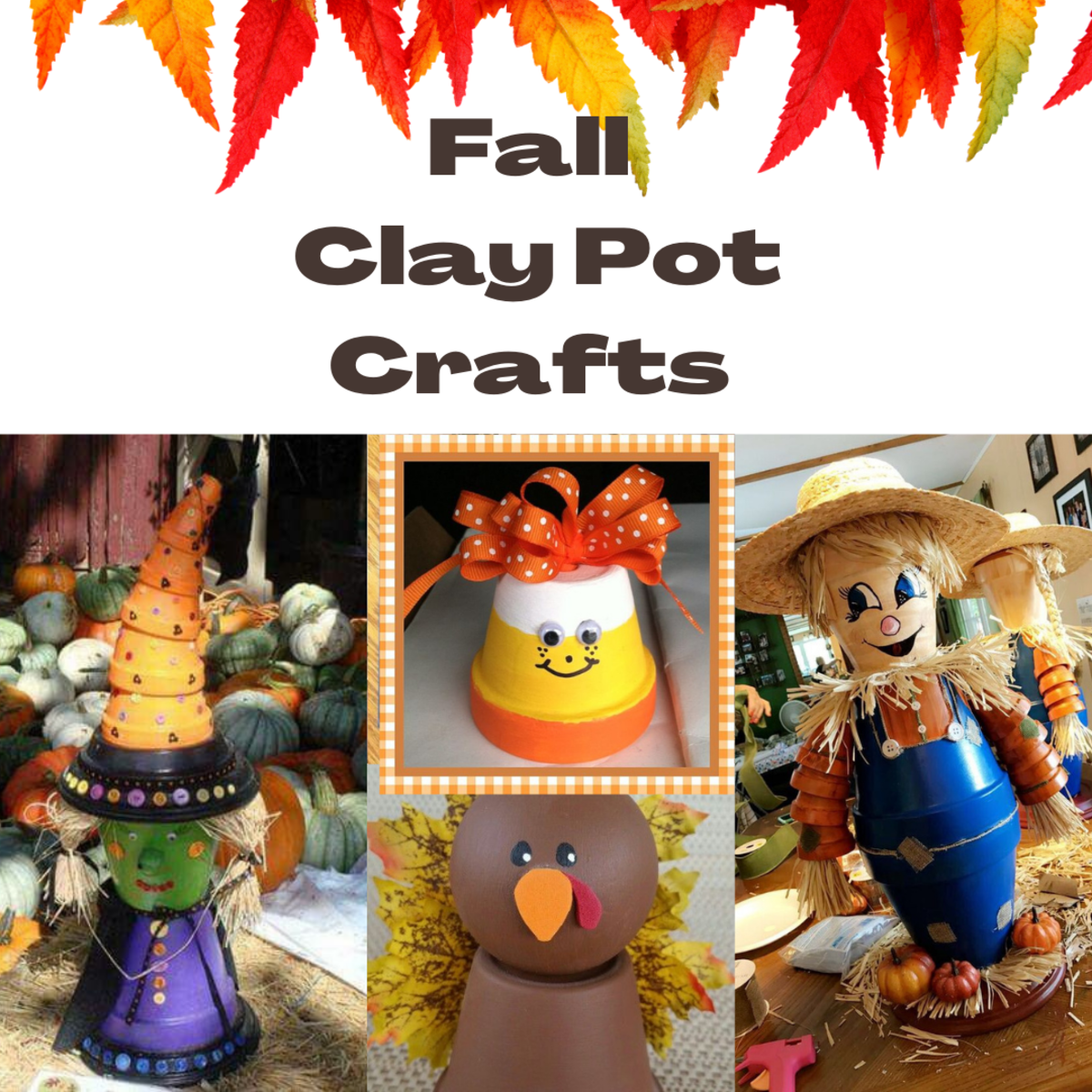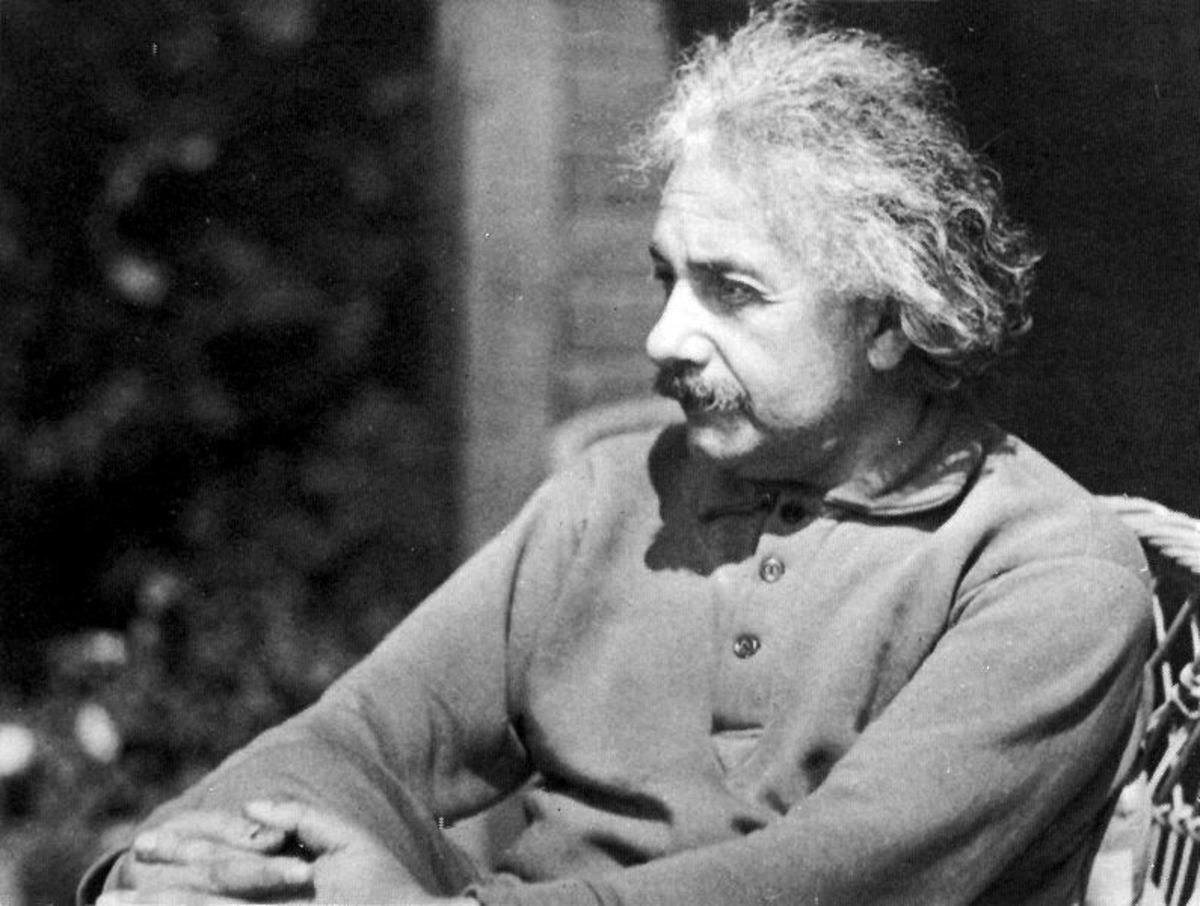Clay Chimney Pot

Introduction
In the times of the knight, a bygone era of chivalry, the chimney pots of legend arose from the English home. Learn how a product born of need became an emblem of home, hearth, and heart. Today we look up and we look back at the clay chimney pot.
Clay Chimney Pot with Rain Guard
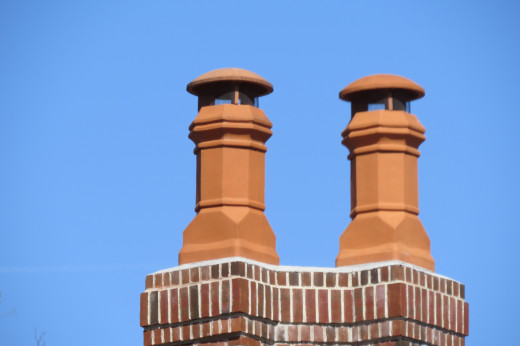
Spark of Inspiration
The first pots like all fledglings were rough and tumble. Their creators built them to solve an age old foe. The dreaded fire was needed to cook but could destroy a medieval straw dwelling in an instant. Authorities of architectural history agree that chimney pots in England were first introduced some time during the 13th century. Few examples of such pots are still standing.
Modern Artisan Making A Chimney Pot
Purpose of Chimney Pots
The Oxford English Dictionary states that the word 'Chimney' originated from the Latin word Caminus meaning furnace, forge or oven. It changed in the Middle Ages to Chimenee and finally to Chimney. A chimney pot is a structure that is mortared on top of the chimney stack. During the Tudor Period this edifice was one unit of solid brick.
The ultimate purpose of a chimney pot is to reduce the size of the outlet. As warm air rises it can bottleneck. The taller pots create a jet-like effect to fire the smoke out the terminal end. The reduction of the opening also reduces rainfall from entering the chimney and deters downdrafts of air.
Some pots have assorted openings known as louvres, pockets, grills, and horns. They promote cross drafts at the top of the chimney to increase safe draft flow. In all, a pot enhances how a house looks, while making the chimney a safer more efficient device.
The Early Years
Chimney pots were documented as early as the 13th century. In the United States, like much of Europe, they were popularized in the mid 1800s. Because of their ability to increase updraft within a chimney, they were invaluable in small and large houses and buildings where fireplaces served as the primary heat source. Since coal was the fuel of choice, it was of utmost importance that noxious fumes and and soot be vented up the chimney and out of the house.
The First Pots
Medieval Period dwellings were situated around a central hearth in the great hall. There was no single fireplace. Smoke from fires rose up through rafters and escaped from the various holes on the chimney pot
The first masonry chimneys had intricate tops with side slits for smoke. Known as the ten style chimney terminal, the exact date of execution is hard to pinpoint. For efficiency's sake four corners were later added to the stack. The four apertures allowed smoke to escape to the heavens in a more balanced manner. Another added benefit was the reduction of water going down the flue.
While Robin Hood was jumping from rooftop to rooftop giving money to the poor, he may have jumped by the first clay chimney pot. Around the era of the Holy Land's (today's Middle East) Fourth Crusade (circa 1200), builders began to construct taller stacks. The advantage of adding height helped achieve maximum draft.
It is difficult to find outstanding examples of individual chimney pots introduced during this and the next (14th) century. However, 100 years later, pots as we know them had originated in small numbers.
Clay Kilns

Tudor Era Pots
Moving forward we come upon the heyday of English brickwork. While Henry the VIII was off marrying all of his wives, chimney pots overhead kept evolving. They were not a separate entity during this period. Many English examples still survive that illustrate how the immense brickwork flows into the terminal of the chimney pot. These statuesque structures look like giant arms climbing into the sky. The individual pot we know today remained a rarity until the Victorian Era.
Giant Chimney Pot
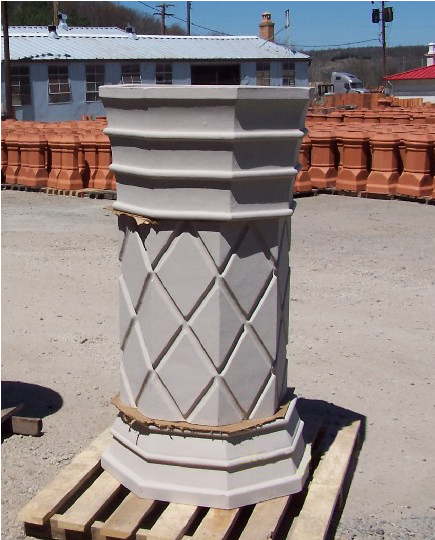
Transatlantic
Victorian society valued any item that would enhance their property. Concurrently the main source of fuel was coal. So extra draft pots were pivotal for safely releasing harsh carbon fumes from the home. Thousands of different styles arose. American society during the 1880s was infatuated with anything England in the way we now idolize Hollywood. Thus, these chimney pot designs made their way across the ocean, accenting American roofs far and wide.
Masonry Accent Feature
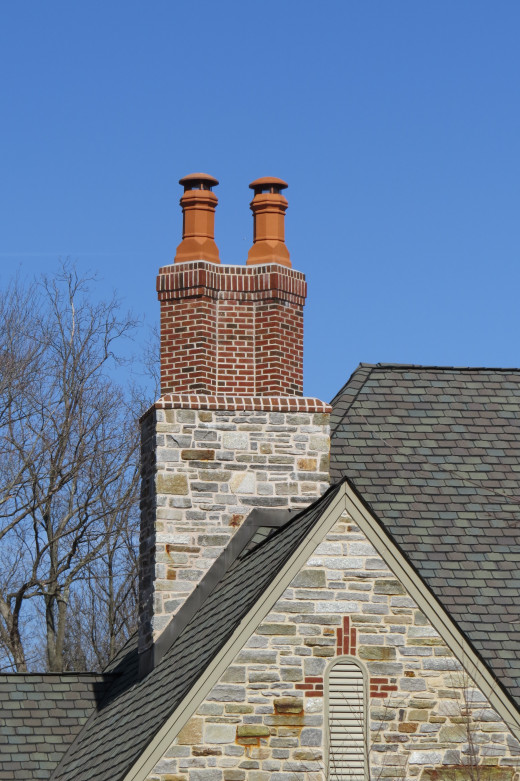
Purchasing a Chimney Pot
Purchasing a chimney pot does require some diligence. With so many different styles to choose from, your mind can go numb and selection atrophy might take place. Start by amusing yourself. Randomly browse online or intentionally access Pinterest or Flickr to focus on images of interest. Print out a few styles, then paste them above a picture of your home's chimney(s). Just see what feels right in your gut.
There are three types of chimney pots, ones made from terracotta also known as clay chimney pots, copper, or steel. Terracotta is by far the most elegant. Copper pots are a lightweight option that eventually provide a Verde (greenish) look. Steel pots cost less to ship and are easier to mount. I however personally prefer terracotta with their longstanding and withstanding natures. To me they are the most authentic, the traditional originals, tried and true.
Ordering terracotta pots does require a bit of planning. They are heavy and will have to be taken off of the shipping truck using a liftgate. Clearly and frequently communicate with your supplier to ensure that your pot arrives safely intact.
Installing the pot is rather easy once it is on the roof. The tricky part is getting that heavy piece of clay skyward. That's why 99% of customers choose to hire a mason to install their pots. Such an expert will erect the proper scaffolding and skillfully get the pot up there atop your chimney(s). Once aloft he or she will secure it around the flue with mortar.
Clay Chimney Pot Shop
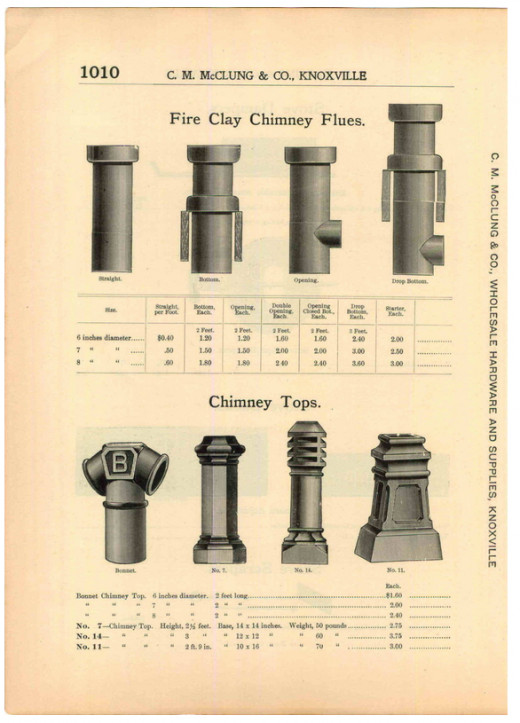
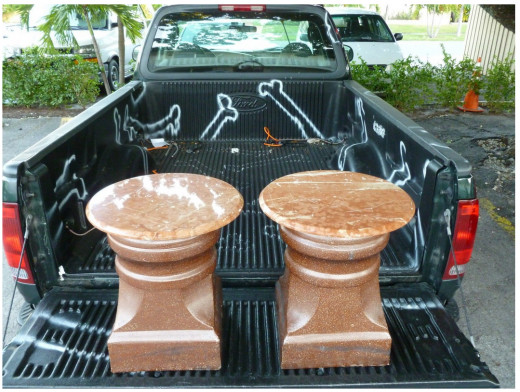
Upcycling: Chimney Planters
Old pots are now often used in gardens. The picture above illustrates how someone turned them into interesting tables. The point is that clay chimney pots are prime contenders for upcycling projects!
Post Y2K
Post Y2K homes hanker for classical architectural details on a grand scale. What relates is that many chimney pots are extra large. The large Edwardian is among the most popular style. Folks often choose this pot with the rain guard for its manor-like appeal. The larger Magnum size is a close second to the Large (Edwardian) size. Sometimes designers and homeowners mix and match pots on larger chimneys for the ultimate effect.
Rain-Guard
In rainy terrains, such as Portland, Oregon, it is essential to add the terracotta rain guard. This feature adds extra protection from water. Many styles exist and look like a crown on the chimney pot.
An Example of a 14th Century Pot
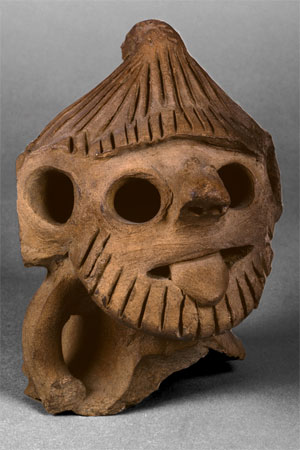
Types of Pots with Their Interesting Names
- The Tapered Rolltop
- The Plain Taper
- The Lady Broughton
- The Plain Rolled Taper
- The Bellied Pot
- The Bottle Pot
- The Roll Top
- The Bishop
- The Georgian
- The Plain Roll
- The Bishop Two-Piece
- The Venetian
- The Moulded Roll
- The Windguard
- The Rook
- The Beehive
- The Bell Top
- The Marcone
- The Pocket Beehive
- The Tulip
- The Smoke Cure
- The Cannon Head
- The Long Knight
- The Edwardian
- Flange Cannon Head
- The Halifax
- The Horned Crown Pot
Chimney Pot Reference Book
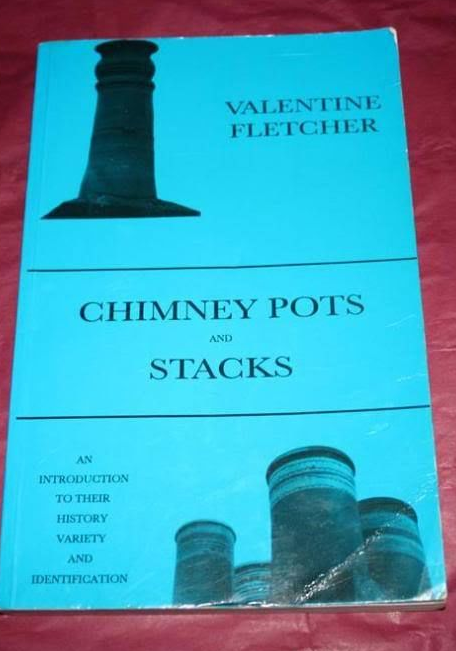
Further Reading
Known as caminology, author Valentine Fletcher first expressed a term to denote the study of chimneys. Searching the web via this keyword does unveil a host of peculiar content. A handful of texts exist that delve into the life of chimneys. For example, the United Kingdom's National Clayware Federation's 1964 catalog details over 500 different styles of chimney pots. Accessing this book may require an email or call to the British Library. Otherwise, venture outside. In either case, go look and see where smoke meets the sky.

